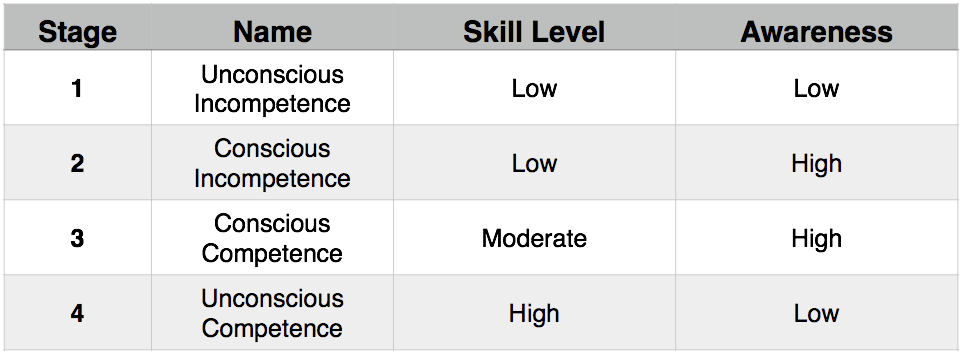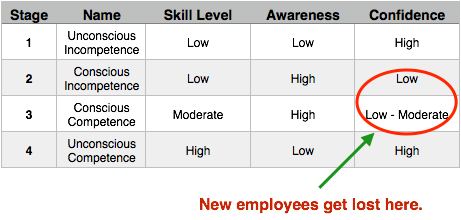Jesse stood awkwardly next to her trainer who was ringing up customer orders. It was a busy weekday morning at the bagel shop where Jesse had just started working. The trainer didn’t have much time for training.
Jesse anxiously looked over the trainer’s shoulder, hoping to learn some of the cashier functions by observation. She felt self-conscious as customers looked at her and wondered why she wasn’t taking orders too.
She wanted to be useful but she didn’t know how. Jesse hadn’t yet learned to ring up orders. She hadn’t yet learned to make orders. She didn’t know how to operate the espresso machine. She could wipe down tables, but all the tables were clean. She could pass out orders, but there weren’t any orders to pass out at the moment.
A chance to serve finally came when a customer approached and asked her a question. The awkwardness quickly returned when Jesse realized she didn’t know the answer. She had to interrupt the store manager who was also busy cashiering.
Why it’s hard to be a new employee
Most new employees aren’t fully trained when they begin serving customers. Stan Phelps recently wrote that only 25 percent of companies have a formal on-boarding program. For the remaining companies, on-boarding consists of a minimal amount of training before being thrown into the fire.
Minimally trained new employees know how to do a few things but don’t know how to fully do their jobs. They must constantly stop and ask questions. They lack the skills, experience, and confidence to serve customers the right way.
It’s not their fault.
It’s just that customers don’t care if this is your first hour of your first day or your 10,000th hour on the job. They expect to be served a certain way. This puts added pressure on the new employee who wants to get it right but doesn’t yet know how.
Experienced employees and managers often don’t understand either. They’re the ones who should be helping the new employee succeed, but it’s been too long since they were in their shoes. Besides, they have a lot to do today besides training.
So new employees like Jesse fumble along.
Some eventually learn to do their jobs and do them well. Others pick up bad habits and never fully realize their potential. Still others dread the feeling of awkward helplessness that comes with being new and quickly decide to take their talents somewhere else.
It’s this place between minimal training and customer service mastery that so many employees like Jesse are needlessly lost.
Preventing this from happening requires an understanding of where new employees get lost on the learning curve.
Four Critical Stages Along the Learning Curve
Noel Burch first identified four distinct stages along the learning curve. Each stage is marked by the learner’s skill level compared to how conscious they are of their skill level.

Stage 1: Trainers sometimes refer to stage 1 as the bliss stage because learners don’t know what they don’t know. For a new employee, this might be just prior to the start of a new job. You’d expect someone to be excited about working somewhere new.
Stage 2: Learners become aware of their limited skill level when they reach stage 2. This is usually marked by a corresponding drop in confidence. New employees typically reach this stage when they start learning a new skill.
Stage 3: Learners can demonstrate the skill at a minimal level but they haven’t mastered the skills necessary to be fully successful. The newness and unfamiliarity of the skill makes them very self-conscious This means confidence remains low.
New employees like Jesse are typically somewhere between stages 2 and 3 when they start working directly with customers.
Stage 4: Employees reach stage 4 when they can do their jobs without really thinking about the basic procedures. Confidence here is generally high.
Let’s look at the four stages again with typical confidence levels for each stage:

It’s critical for trainers to offer encouragement to new employees during stages 2 and 3.
Low confidence can quickly lead to disengagement if new employees don’t feel supported. Here are some critical messages that must be communicated to new employees to prevent this from happening:
- Let them know it’s okay to make mistakes during training.
- Commend then on the progress they’re making.
- Be available to guide them and provide assistance.
- Encourage them to stay on track.
The store manager and the trainer at Jesse’s bagel shop weren’t doing any of these things. They were both too busy serving customers to notice Jesse trying hard not to get lost.



